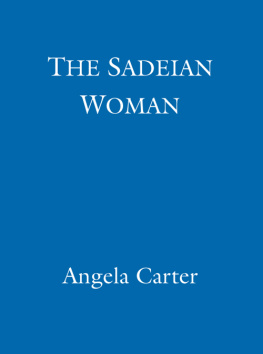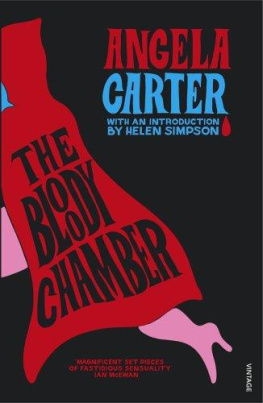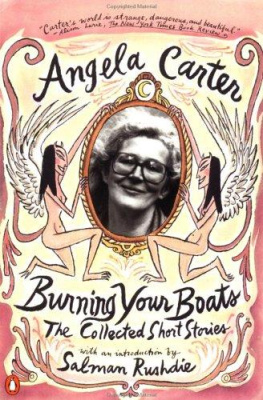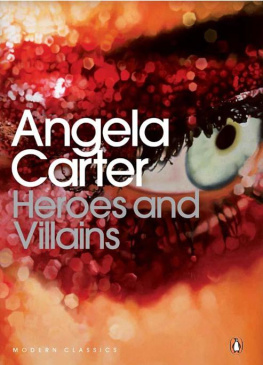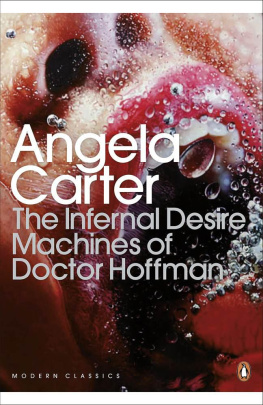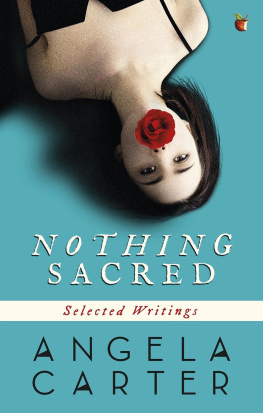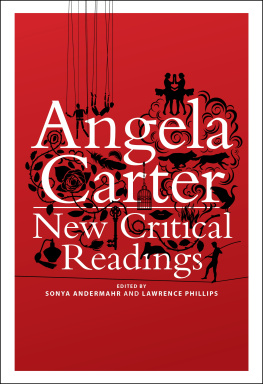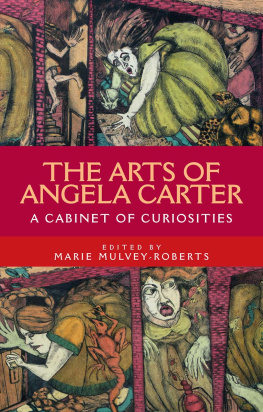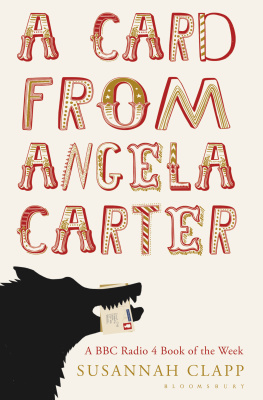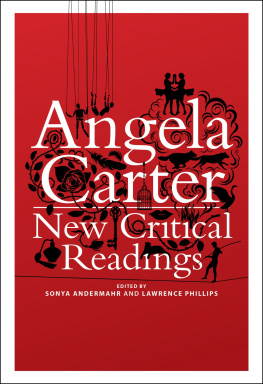Angela Carter - The Sadeian Woman
Here you can read online Angela Carter - The Sadeian Woman full text of the book (entire story) in english for free. Download pdf and epub, get meaning, cover and reviews about this ebook. year: 0, genre: Science. Description of the work, (preface) as well as reviews are available. Best literature library LitArk.com created for fans of good reading and offers a wide selection of genres:
Romance novel
Science fiction
Adventure
Detective
Science
History
Home and family
Prose
Art
Politics
Computer
Non-fiction
Religion
Business
Children
Humor
Choose a favorite category and find really read worthwhile books. Enjoy immersion in the world of imagination, feel the emotions of the characters or learn something new for yourself, make an fascinating discovery.
- Book:The Sadeian Woman
- Author:
- Genre:
- Year:0
- Rating:4 / 5
- Favourites:Add to favourites
- Your mark:
- 80
- 1
- 2
- 3
- 4
- 5
The Sadeian Woman: summary, description and annotation
We offer to read an annotation, description, summary or preface (depends on what the author of the book "The Sadeian Woman" wrote himself). If you haven't found the necessary information about the book — write in the comments, we will try to find it.
The Sadeian Woman — read online for free the complete book (whole text) full work
Below is the text of the book, divided by pages. System saving the place of the last page read, allows you to conveniently read the book "The Sadeian Woman" online for free, without having to search again every time where you left off. Put a bookmark, and you can go to the page where you finished reading at any time.
Font size:
Interval:
Bookmark:

MODERN CLASSICS
289

Angela Carter
Angela Carter (19401992) was born in Eastbourne and brought up in south Yorkshire. One of Britains most original and disturbing writers, she read English at Bristol University and wrote her first novel, Shadow Dance, in 1965. The Magic Toyshop won the John Llewellyn Rhys Prize in 1969 and Several Perceptions won the Somerset Maugham Prize in 1968. More novels followed and in 1974 her translation of the fairy tales of Charles Perrault was published, and in the early nineties she edited the Virago Book of Fairy Tales (2 vols). Her journalism appeared in almost every major publication; a collection of the best of these were published by Virago in Nothing Special (1982). She also wrote poetry and a film script together with Neil Jordan of her story The Company of Wolves. Her last novel, Wise Children, was published to widespread acclaim in 1991. Angela Carters death at age fifty-one in February 1992 robbed the English literary scene of one of its most vivacious and compelling voices Independent.
Fiction
Shadow Dance
The Magic Toyshop
Several Perceptions
Heroes and Villains
Love
The Infernal Desire Machines of Doctor Hoffman
The Passion of New Eve
Black Venuss Tale
Nights at the Circus
Wise Children
The Virago Book of Fairy Tales (ed.)
The Second Virago Book of Fairy Tales (ed.)
Wayward Girls and Wicked Women:
An anthology of stories (ed.)
Short Stories
Fireworks: Nine Profane Pieces
The Bloody Chamber and Other Stories
Black Venus
American Ghosts & Old World Wonders
Burning Your Boats: the Complete Short Stories
Non-fiction
The Sadeian Woman: An Exercise in Cultural History
Nothing Sacred: Selected Writings
Expletives Deleted: Selected Writings
Published by Virago
ISBN: 978-0-34900-814-1
All characters and events in this publication, other than those clearly in the public domain, are fictitious and any resemblance to real persons, living or dead, is purely coincidental.
Copyright 1979 Angela Carter
The moral right of the author has been asserted.
All rights reserved. No part of this publication may be reproduced, stored in a retrieval system, or transmitted, in any form or by any means, without the prior permission in writing of the publisher.
The publisher is not responsible for websites (or their content) that are not owned by the publisher.
Virago
Little, Brown Book Group
Carmelite House
50 Victoria Embankment
London EC4Y 0DZ
www.littlebrown.co.uk
www.hachette.co.uk
Sade was born in 1740, a great nobleman; and died in 1814, in a lunatic asylum, a poor man. His life spans the entire period of the French Revolution and he died in the same year that Napoleon abdicated and the monarchy was restored to France. He stands on the threshold of the modern period, looking both backward and forwards, at a time when the nature of human nature and of social institutions was debated as freely as it is in our own.
Sades work concerns the nature of sexual freedom and is of particular significance to women because of his refusal to see female sexuality in relation to its reproductive function, a refusal as unusual in the late eighteenth century as it is now, even if today the function of women as primarily reproductive beings is under question. The Sadeian Woman is neither a critical study nor a historical analysis of Sade; it is, rather, a late-twentieth-century interpretation of some of the problems he raises about the culturally determined nature of women and of the relations between men and women that result from it an opposition which is both cruelly divisive in our common struggle to understand the world, and also, in itself, a profound illumination of the nature of that struggle.
Sadism is not a name finally given to a practice as old as Eros; it is a massive cultural fact which appeared precisely at the end of the eighteenth century, and which constitutes one of the greatest conversions of Western imagination: unreason transformed into delirium of the heart, madness of desire, the insane dialogue of love and death in the limitless presumption of appetite.
Madness and Civilisation,
Michel Foucault
I am not the slave of the Slavery that dehumanised my ancestors.
Black Skin White Masks,
Frantz Fanon
Pornographers are the enemies of women only because our contemporary ideology of pornography does not encompass the possibility of change, as if we were the slaves of history and not its makers, as if sexual relations were not necessarily an expression of social relations, as if sex itself were an external fact, one as immutable as the weather, creating human practice but never a part of it.
Pornography involves an abstraction of human intercourse in which the self is reduced to its formal elements. In its most basic form, these elements are represented by the probe and the fringed hole, the twin signs of male and female in graffiti, the biological symbols scrawled on the subway poster and the urinal wall, the simplest expression of stark and ineradicable sexual differentiation, a universal pictorial language of lust or, rather, a language we accept as universal because, since it has always been so, we conclude that it must always remain so.
In the stylisation of graffiti, the prick is always presented erect, in an alert attitude of enquiry or curiosity or affirmation; it points upwards, it asserts. The hole is open, an inert space, like a mouth waiting to be filled. From this elementary iconography may be derived the whole metaphysic of sexual differences man aspires; woman has no other function but to exist, waiting. The male is positive, an exclamation mark. Woman is negative. Between her legs lies nothing but zero, the sign for nothing, that only becomes something when the male principle fills it with meaning.
Anatomy is destiny, said Freud, which is true enough as far as it goes, but ambiguous. My anatomy is only part of an infinitely complex organisation, my self. The anatomical reductionalism of graffiti, the reductio ad absurdum of the bodily differences between men and women, extracts all the evidence of me from myself and leaves behind only a single aspect of my life as a mammal. It enlarges this aspect, simplifies it and then presents it as the most significant aspect of my entire humanity. This is true of all mythologising of sexuality; but graffiti lets it be seen to be true. It is the most explicit version of the idea of different sexual essences of men and women, because it is the crudest. In the face of this symbolism, my pretensions to any kind of social existence go for nothing; graffiti directs me back to my mythic generation as a woman and, as a woman, my symbolic value is primarily that of a myth of patience and receptivity, a dumb mouth from which the teeth have been pulled.
Sometimes, especially under the influence of Jung, a more archaic mouth is allowed to exert an atavistic dominance. Then, if I am lucky enough to be taken with such poetic pseudo-seriousness, my nether mouth may be acknowledged as one capable of speech were there not, of old, divinatory priestesses, female oracles and so forth? Was there not Cassandra, who always spoke the truth, although admittedly in such a way that nobody ever believed her? And that, in mythic terms, is the hell of it. Since that female, oracular mouth is located so near the beastly backside, my vagina might indeed be patronisingly regarded as a speaking mouth, but never one that issues the voice of reason. In this most insulting mythic redefinition of myself, that of occult priestess, I am indeed allowed to speak but only of things that male society does not take seriously. I can hint at dreams, I can even personify the imagination; but that is only because I am not rational enough to cope with reality.
Next pageFont size:
Interval:
Bookmark:
Similar books «The Sadeian Woman»
Look at similar books to The Sadeian Woman. We have selected literature similar in name and meaning in the hope of providing readers with more options to find new, interesting, not yet read works.
Discussion, reviews of the book The Sadeian Woman and just readers' own opinions. Leave your comments, write what you think about the work, its meaning or the main characters. Specify what exactly you liked and what you didn't like, and why you think so.

